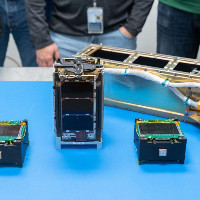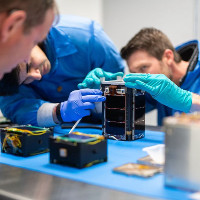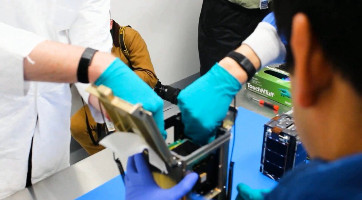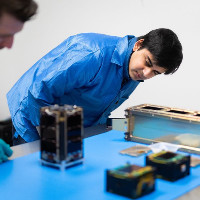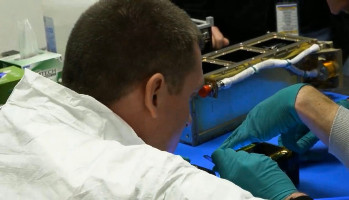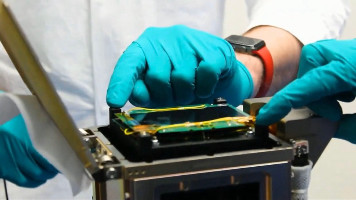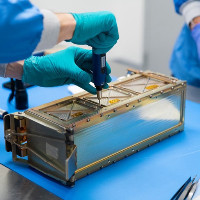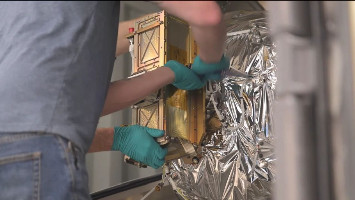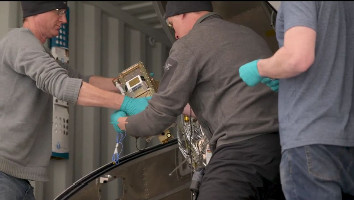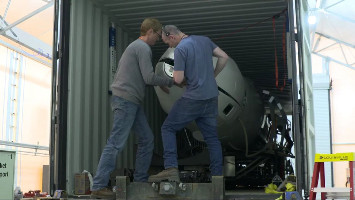| Satellite | ARCE (Articulated Reconnaissance and Communications Expedition) |
|---|---|
| Form factor | CubeSat |
| Units or mass | 0.5U |
| Organisation | University of South Florida |
| Institution | University |
| Entity type | Academic / Education |
| Nation | US |
| Oneliner |
Three identical CubeSats for inter-satellite networked communications research. |
| Description |
Fly together in the same orbit and perform inter-satellite networked communications and a high degree of system autonomy. Through ARCE-1, the University of South Florida aims to demonstrate the algorithms and hardware systems necessary to support large constellations of LEO satellites that will intelligently reconfigure around different tasks, gracefully handle faulty and failed satellites, and operate with a minimum of oversight from Earth-based operators. Mission: inter-satellite networked communications research in support of system autonomy for global communications. Three identical CubeSat satellites will be launched from the same vehicle; upon deployment, they will initiate an automated commissioning process that includes timedelayed deployment of antennas and solar panels, system checks, and low-power crosslinks to the other spacecraft to transfer commissioning reports and estimated orbital parameters. A tunable software defined radio will be flown on the spacecraft to enable multiple communication schemes, from low-data-rate FSK to high-data-rate QAM, to support diverse messaging requirements at any point during a ground pass. Upon successful commissioning, the spacecraft will await contact from the ground station located in Tampa, FL to enter into the primary mission phase where the primary utility is message passing from the ground station in Tampa to either the same ground station (to prove a store-and-forward message handling capability) or to a tobe- determined secondary or mobile station; further, the spacecraft will autonomously determine their orbital state and proximity to the intended targets for any given message, reducing transmissions to only the amount necessary to successfully complete the message delivery. Novel on-board artificial intelligence that determines when to put the satellite into a specific flight mode (e.g. standby, transmission preparation, fault handling, etc.). This on-board AI system will also manage message routing to optimize message delivery to any point on the globe by means of store-and-forward, crosslink, and optimal energy use scheduling. Communications with the ground station will be operated by undergraduate and graduate engineering students, many who are getting licensed for this specific purpose, and some who are using the spacecraft as a testbed for graduate research concerning antenna and RF system design |
| Sources | [1] [2] [3] |
| Photo sources | [1] [2] [3] |
Related Spacecraft
| Spacecraft | Status | Launcher | Launch | Orbit |
|---|---|---|---|---|
| ARCE-1A (Articulated Reconnaissance and Communications Expedition – 1) | Reentry 2024-01-19. Was operational? (Mention in news from 2021-05-14 and objects have been identified in Space-Track) | Falcon 9, (Transporter-1), (Spaceflight Sherpa) | 2021-01-24 | 525 km, 97.5 deg |
| ARCE-1B (Articulated Reconnaissance and Communications Expedition – 1) | Reentry 2024-01-24. Was operational? (Mention in news from 2021-05-14 and objects have been identified in Space-Track) | Falcon 9, (Transporter-1), (Spaceflight Sherpa) | 2021-01-24 | 525 km, 97.5 deg |
| ARCE-1C (Articulated Reconnaissance and Communications Expedition – 1) | Reentry 2024-01-09. Was operational? (Mention in news from 2021-05-14 and objects have been identified in Space-Track) | Falcon 9, (Transporter-1), (Spaceflight Sherpa) | 2021-01-24 | 525 km, 97.5 deg |
Last modified: 2024-05-27
